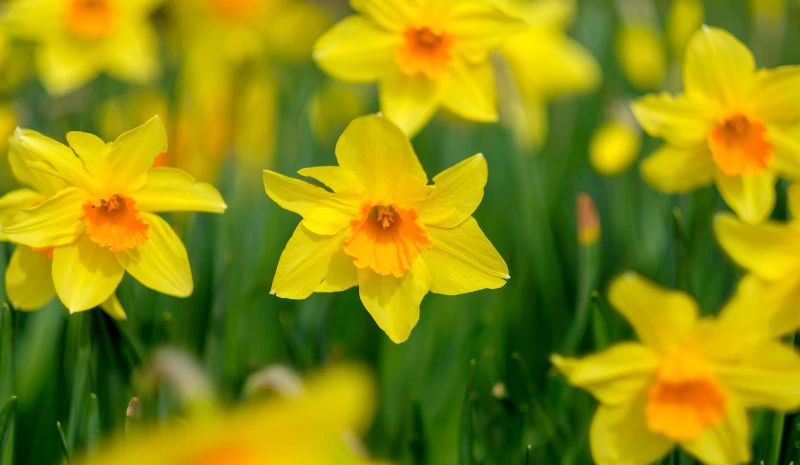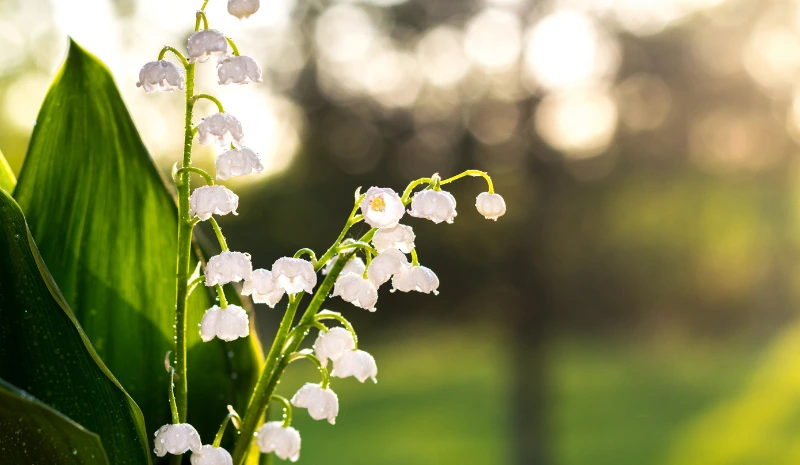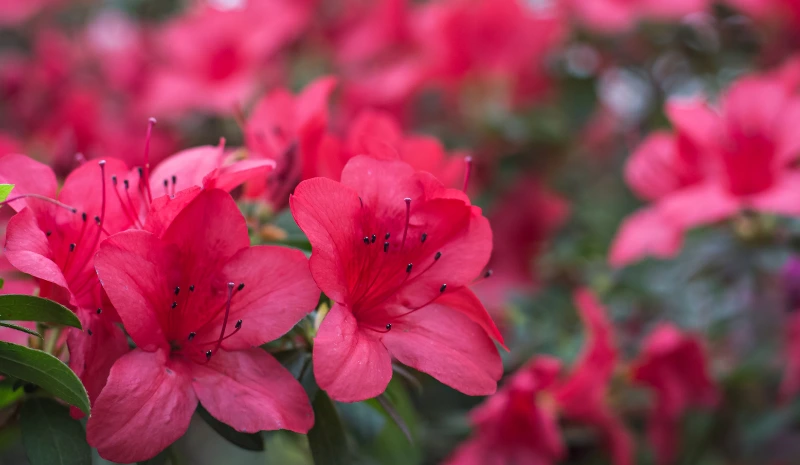Spring is the season of renewal, when gardens wake up from their winter slumber and burst into life with vibrant colors and intoxicating fragrances. Whether you’re an experienced gardener or just starting out, planting spring flowers is one of the most rewarding ways to celebrate this season of growth, and choosing the right flowers can make all the difference.
From cheerful daffodils to fragrant lilacs, there’s a world of flowers that bloom in spring. Ready to make your garden shine? Let’s explore these 14 stunning spring blossoms that will bring joy, beauty, and life to your outdoor space.
1. Daffodil (Narcissus)

Daffodils are the quintessential spring bloom flowers, brightening gardens with their cheerful, trumpet-shaped blooms. Often regarded as the harbingers of spring, daffodils emerge in early spring to announce that warmer days are on the way. These hardy flowers are easy to grow and will naturalize in your garden, multiplying year after year. They’re also deer- and rodent-resistant, making them a reliable favorite for gardeners.
While their signature golden yellow is iconic, daffodils also bloom in shades of creamy white, pale peach, and even two-toned varieties with contrasting cups and petals. Some modern hybrids feature shades of coral, orange, and pink for a unique twist.
USDA Hardiness Zones: 3 to 9
Color Varieties: Yellow, white, orange, pink, and bicolors
Sun Exposure: Full sun to partial shade
Soil Needs: Well-drained, moderately fertile soil
2. Hyacinth (Hyacinthus)

Nothing says “spring” like the sweet fragrance of hyacinths. These compact, spiky flowers are loved for their intense perfume, which fills the garden with a rich, heady aroma. Perfect for borders, rock gardens, or containers, hyacinths add bursts of bold color to your landscape. Plant the bulbs in the fall, and come spring, you’ll have a fragrant carpet of blooms to enjoy.
USDA Hardiness Zones: 4 to 8
Color Varieties: Blue, purple, pink, white, yellow, red, and apricot
Sun Exposure: Full sun to partial shade
Soil Needs: Well-drained, sandy or loamy soil
3. Lenten Rose (Helleborus)

Lenten roses, also known as hellebores, are magical spring flowers that bloom as early as late winter. Their nodding, cup-shaped blooms and evergreen foliage make them a standout in shaded or woodland gardens. These hardy perennials come in a variety of elegant shades and are wonderfully resistant to cold weather.
USDA Hardiness Zones: 4 to 9
Color Varieties: White, pink, purple, green, and speckled shades
Sun Exposure: Partial to full shade
Soil Needs: Rich, well-drained soil
4. Lily of the Valley (Convallaria majalis)

Lily of the Valley is a timeless spring blossom that enchants with its delicate white or pink bell-shaped flowers and sweet fragrance. These hardy perennials are ideal for shaded areas where they spread quickly to form lush ground covers. Though small in stature, Lily of the Valley makes a big impact in any spring garden.
USDA Hardiness Zones: 3 to 8
Color Varieties: White and light pink
Sun Exposure: Partial to full shade
Soil Needs: Moist, well-drained soil
5. Magnolia (Magnolia spp.)

Few trees capture the essence of spring blossoms quite like magnolias. These show-stopping trees and shrubs are celebrated for their large, dramatic flowers that bloom in early spring, often before their leaves appear. Whether planted as a standalone specimen or as part of a landscape design, magnolias bring a sense of grandeur to any garden.
USDA Hardiness Zones: 4 to 9 (varies by species)
Color Varieties: White, pink, purple, yellow
Sun Exposure: Full sun to partial shade
Soil Needs: Rich, moist, well-drained soil
6. Alyssum (Lobularia maritima)

If you’re looking for a soft, fragrant carpet of blooms, alyssum is the perfect choice. This low-growing plant produces tiny, honey-scented flowers in abundance, making it a favorite for edging pathways, filling containers, or creating ground cover. Alyssum is one of the easiest spring flowers to grow and pairs beautifully with other spring bloomers.
USDA Hardiness Zones: 5 to 9 (perennial in warmer zones; annual elsewhere)
Color Varieties: White, pink, purple, yellow
Sun Exposure: Full sun to partial shade
Soil Needs: Well-drained, moderately fertile soil
7. Tulip (Tulipa)
Tulips are iconic flowers that bloom in spring, with their elegant, cup-shaped blooms brightening gardens around the world. These versatile flowers come in nearly every color imaginable, from soft pastels to bold, dramatic hues. Whether planted en masse in flower beds or displayed in containers, tulips are sure to steal the show in your garden.
USDA Hardiness Zones: 3 to 8
Color Varieties: Red, pink, yellow, white, orange, purple, and bicolors
Sun Exposure: Full sun to partial shade
Soil Needs: Well-drained, fertile soil
Read more: How to Grow Tulip Plants
8. Viburnum (Viburnum spp.)

Viburnum is a versatile shrub that deserves a spot in every spring garden. Known for its showy clusters of flowers, viburnum comes in many varieties that bloom in spring, offering fragrant blossoms and striking foliage. Some varieties even feature colorful berries in the fall, making this plant a year-round garden hero.
USDA Hardiness Zones: 3 to 8 (varies by species)
Color Varieties: White, pink, creamy hues
Sun Exposure: Full sun to partial shade
Soil Needs: Well-drained, moderately fertile soil
Toxic to: Not toxic
9. Weigela (Weigela florida)

For a shrub that delivers stunning spring blossoms, weigela is hard to beat. This hardy plant is known for its profusion of tubular flowers that attract hummingbirds and pollinators. Its arching branches add structure and charm to borders, hedges, or as a standalone feature in your spring garden.
USDA Hardiness Zones: 4 to 8
Color Varieties: Pink, red, white, and yellow
Sun Exposure: Full sun to partial shade
Soil Needs: Well-drained, fertile soil
Toxic to: Not toxic
10. Lilac (Syringa spp.)

No list of spring flowers would be complete without lilacs. Their clusters of fragrant blooms are beloved by gardeners and pollinators alike. These classic shrubs thrive in sunny gardens and produce long-lasting blooms that are perfect for cutting and bringing indoors.
USDA Hardiness Zones: 3 to 7
Color Varieties: Purple, lavender, white, pink, and bicolors
Sun Exposure: Full sun
Soil Needs: Well-drained, slightly alkaline soil
Toxic to: Not toxic
11. Winter Jasmine (Jasminum nudiflorum)
Winter jasmine is one of the earliest flowers to plant in February, often blooming before the snow has fully melted. Its cheerful yellow flowers cascade from bare branches, adding a splash of sunshine to late winter and early spring landscapes. This hardy shrub is perfect for slopes, walls, or trellises.
USDA Hardiness Zones: 6 to 10
Color Varieties: Bright yellow
Sun Exposure: Full sun to partial shade
Soil Needs: Well-drained soil
Toxic to: Not toxic
12. Azaleas (Rhododendron spp.)

Azaleas are among the most stunning spring flowers you can plant. With their showy, funnel-shaped blooms in a wide range of colors, they create a bold statement in any garden. Azaleas thrive in shaded gardens, making them perfect for areas under trees or along fences.
USDA Hardiness Zones: 4 to 9
Color Varieties: Pink, white, red, orange, and purple
Sun Exposure: Partial shade
Soil Needs: Acidic, well-drained soil rich in organic matter
Toxic to: Pets and humans
13. Vinca Plants (Vinca minor)

Also known as periwinkle, vinca is a hardy ground cover that produces delicate star-shaped flowers in early spring. Its evergreen leaves and spreading habit make it a fantastic choice for shady areas, rock gardens, or slopes where you want low-maintenance greenery paired with spring blossoms.
USDA Hardiness Zones: 4 to 9
Color Varieties: Purple, lavender, blue, white
Sun Exposure: Partial to full shade
Soil Needs: Well-drained soil
Toxic to: Pets
14. Forsythia (Forsythia spp.)

Forsythia is one of the first flowers to plant in February if you’re looking for a dazzling golden display. Its arching branches explode with bright yellow blooms that are sure to lift your spirits after winter’s chill. Forsythia is easy to grow and looks stunning as a hedge, screen, or standalone feature in spring gardens.
USDA Hardiness Zones: 4 to 9
Color Varieties: Yellow
Sun Exposure: Full sun to partial shade
Soil Needs: Well-drained soil
Toxic to: Not toxic
Conclusion
Spring is the season of transformation, and there’s no better way to celebrate it than by filling your garden with these stunning spring flowers. Whether you’re looking for fragrant blossoms like lilacs and hyacinths or vibrant blooms like tulips and forsythias, this list of flowers that bloom in spring has something for every gardener.
If you’re wondering what flowers to plant in February, many of these beauties, like daffodils, hyacinths, and winter jasmine, are ideal choices. They’ll bring color, life, and joy to your garden while welcoming the new season in style.
Want to learn more about growing beautiful, chemical-free spring blossoms? Check out the Garden Plant Nursery to learn more tips on regenerative gardening, soil health, and planting techniques that will take your garden to the next level!
